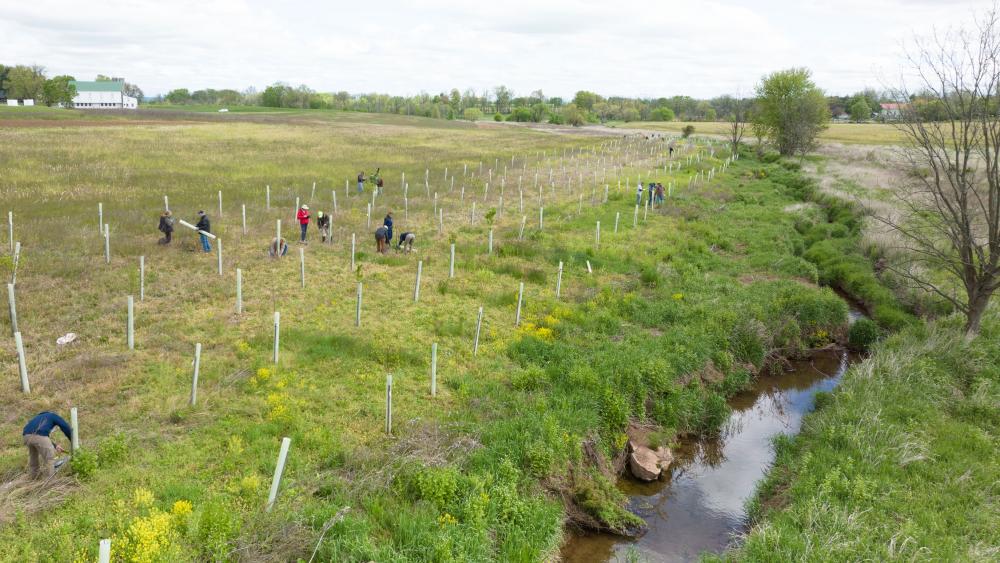
UNIVERSITY PARK, Pa. — To accelerate conservation and reduce water pollution, a Penn State team composed of outreach staff and extension educators will build upon existing partnerships with organizations in the lower Susquehanna River basin. The watershed is plagued by runoff of nutrients such as nitrogen and phosphorus from agriculture.
Funded by a three-year, $1 million grant from the National Fish and Wildlife Foundation, the team from the Penn State Agriculture and Environment Center will undertake innovative outreach efforts to extend its Community Watershed Engagement Program. The program utilizes unique watershed partnerships to increase education, outreach and adoption of conservation practices to improve water quality, according to center director Matt Royer.
The initiative will build on collaborative successes and elevate existing watershed partnerships to accelerate conservation in five adjacent watersheds in the high-priority Lower Susquehanna region, noted Royer, who also is an associate research professor in the Department of Agricultural Economics, Sociology, and Education in the College of Agricultural Sciences.
“We’ll provide resources to facilitate watershed partnerships as a venue and framework for sharing information, enhancing collaboration and increasing leads for landowner outreach,” he said. “We’ll enhance the existing partnerships and harness strengths of existing and new partners.”
With guidance from the Agriculture and Environment Center, partnerships in Conewago Creek, Chiques Creek and Conoy Creek watersheds in Lancaster, Lebanon and Dauphin counties, respectively, have established a strong track record of collaboration and success in reducing nutrient pollution, Royer explained. The existing regional partnership will expand to two adjacent watersheds — Little Conestoga in Lancaster County and Spring Creek in Dauphin and Lebanon counties — where partners are in place and interested in collaborating with Penn State to improve water quality.
“We’ll coordinate an agricultural outreach team we call the ‘muddy boots,’” Royer said. “The muddy boots team includes conservation districts, private sector ag consultants and nonprofits like Lancaster Farmland Trust. These partners and our ag outreach staff will visit farmers in the priority watersheds to discuss conservation opportunities.”
Royer added that Penn State Extension educators, volunteers and student interns will work to enhance outreach by engaging citizens in the watersheds through various programs.
The grant will provide funding to farmers interested in implementing riparian buffers comprised of trees, shrubs or both to keep pollutants from entering streams and other agricultural conservation practices on their farms. The Agriculture and Environment Center and its partners will use the grant to fund preliminary work to compete for significant outside funding resources and to facilitate high impact, whole-farm conservation projects.
Among the priority practices offered to farmers will be precision nitrogen management on cropland, aided by a nitrogen recommendation tool being developed by Penn State researcher Charlie White, assistant professor and extension specialist in soil fertility and nutrient management.
“Also, we’ll engage faith communities through capacity-building with congregations, implementing green infrastructure projects at places of worship and inspiring congregational members to take action at their homes and on their farms,” Royer said. “We’ll be working with our partner, Interfaith Partners for the Chesapeake, in this effort.”
Farmers or organizations interested in partnering on this project should contact Royer at [email protected].
